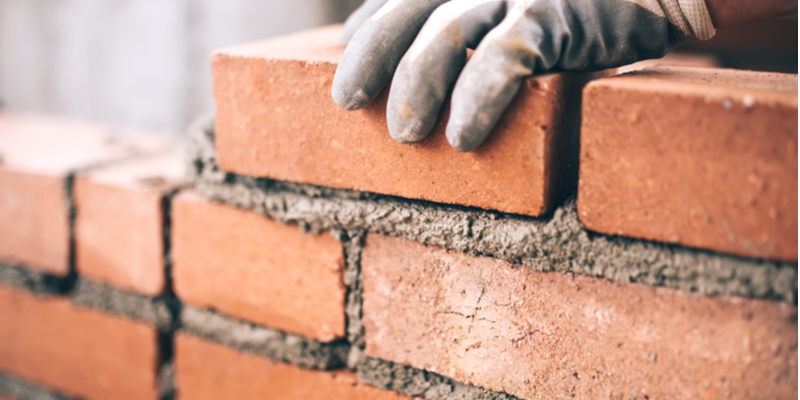As one of the world’s most well-known and timeworn construction methods, masonry is often misunderstood. By definition, masonry is any stonework structure or building in which materials – bricks, concrete blocks, stones, and the like – are bound and connected with the aid of mortar. A paste type of cement, mortar, when dry, holds the structure together.
Every country around the globe offers examples of masonry structures still standing after years of use. Masonry buildings are durable and strong, withstanding weather and other physical forces. Masonry, when reinforced appropriately can even resist earthquakes and hurricanes. Understanding more about masonry will help you select the ideal option for your building project.
The Two Main Types of Masonry
There are two main types of masonry, veneer masonry and solid masonry. Veneer masonry is more common today, the choice for most new homebuilding as well as remodeling projects. With veneer masonry, you gain the aesthetics of solid brick or stone with better insulation and cost effectiveness. It is used in connection with classic wood frame buildings or concrete block structures. Solid masonry is free-standing, not attached to another structure. It was more common fifty or so years ago, when exterior walls were concrete block and faced with brick, stucco, or stone, a nod to the centuries old construction method in which buildings were created from multiple thicknesses of brick. Plaster was then applied to the interior of the masonry walls, which supported the structure and the roof. Given the construction method, manpower, and materials involved, a solid masonry wall is more costly than a veneer masonry wall.
Popular Masonry Materials
Essentially, a masonry structure is one in which masonry materials and mortar are used. Mortar holds the building materials together and comes in different strengths. Among today’s most popular building materials are brick, stone, and concrete.
- Brick – Brick is the most popular choice for masonry today. Typically made of clay, sand, water, with the addition of ash or lime, and baked, bricks are well-known for their durability, aesthetics, and longevity. Brick structures often last generations, while remaining stylish. Bricks come in a wide variety of colors and textures and can be set in unique patterns which add distinct levels of strength to the structure. Bricks perform well in many climates.
- Stone – Stone is among the most durable, strong, and weather resistant construction materials available. Stone has a considerably longer life span than other materials, lasting up to 1,000 years or more. Impervious to snow, sleet, hail, wind, and rain, stone will not dent, warp, swell, splinter, or bend. Two types of stones are commonly used in stone masonry – dressed or undressed. Dressed stone is available in both fluid patterns and sizes and can be laid with a regular pattern while undressed stone, also known as rough stone, delivers a more unique, natural appearance when laid.
- Concrete – Concrete blocks are laid in a similar fashion to bricks, often in a staggered pattern to give strength to the structure. Because of their weight, concrete blocks deliver exceptional stability and strength to exterior walls. Their size, considerably larger than bricks, means less construction time, plus they are generally more affordable and fire resistant. Concrete blocks are also offered in numerous shapes, sizes, and forms, allowing for greater versatility than other options.
Choosing the Best Masonry Structure for Your Project
Masonry structures offer a great deal of variety and can be used inside and outside your home or office, for walls, chimneys, and more. Quality masonry is durable, able to withstand the elements as well as the test of time. Call on the experienced professionals at Turnbull Masonry for assistance in planning, restoring, repairing, or building your next masonry structure.

